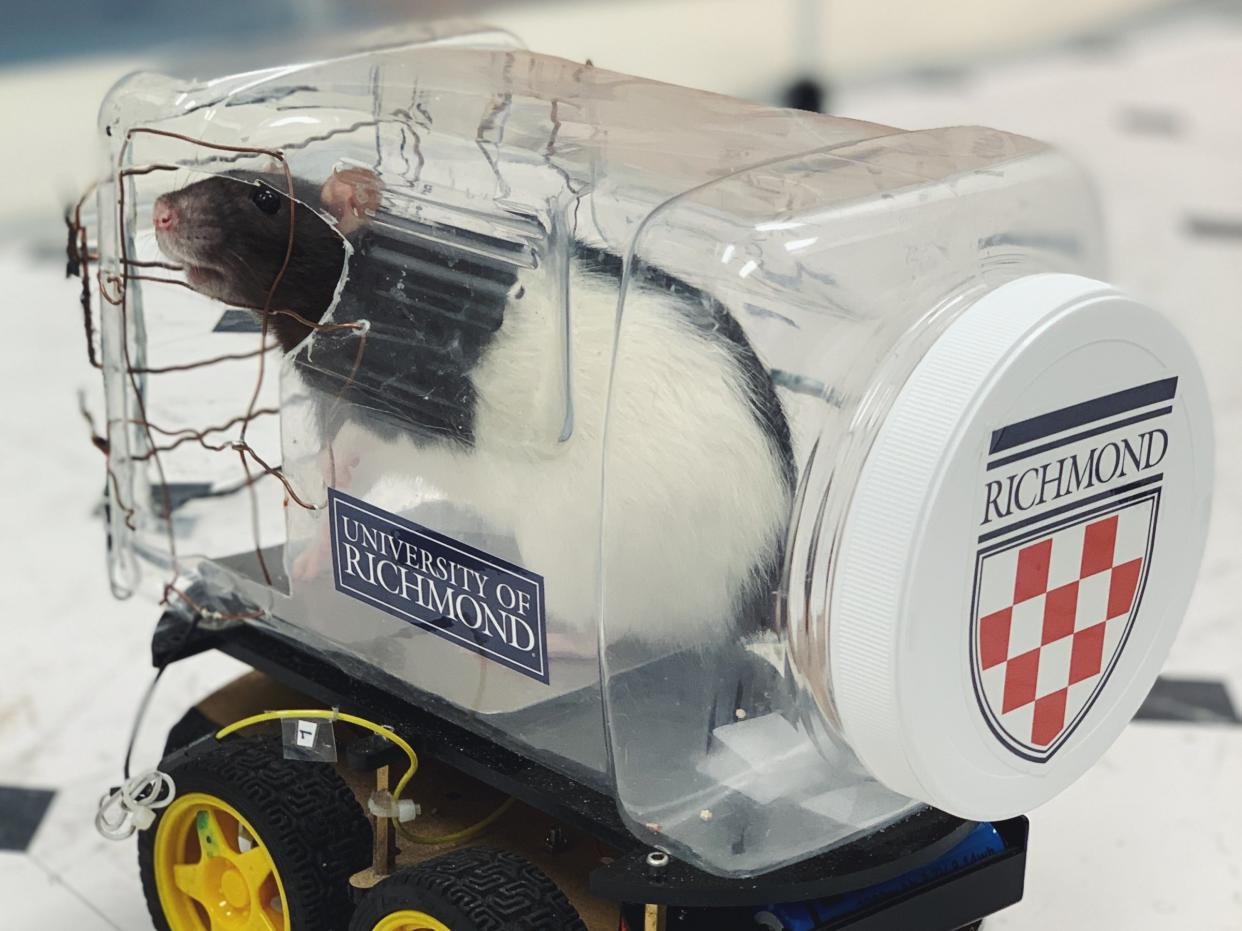These rats learned how to drive tiny little cars so they could eat Froot Loops, and it's so precious

Kelly Lambert / The University of Richmond
Scientists at the University of Richmond taught rats how to drive tiny little cars, New Scientist reported.
The scientists made a car out of a plastic food container and retrofitted it with an aluminum bar and three copper bars for steering wheels.
Scientists trained the rats to drive and steer the car by rewarding them with Froot Loops.
The successful driving test demonstrated the rats had a greater ability to learn complex tasks than scientists previously thought possible.
Kelly Lambert, the lead scientist, said data collected from future tests could be used to help better understand Parkinson's disease and depression.
Rats in a University of Richmond lab have learned to do something many Americans struggle with every day: successfully drive themselves to pick up food. The furry drivers were taught to navigate a custom-built rat car and the findings suggest rats may possess a greater ability to learn tasks than previously thought.
The experiment, first reported on by New Scientist, was the brainchild of the University of Richmond neuroscientist Kelly Lambert. Lambert and her colleagues created a tiny car out of an empty food container and retrofitted it with an aluminum bar and three copper bars for a steering wheel. The copper bar steering wheel and aluminum floor create an electrical current that can propel the car forward. The rats, when properly trained, could control the direction of the car by gripping the left, middle, or right copper bar with their tiny little paws.

Kelly Lambert / University of Richmond
The scientists trained the rats by constantly rewarding them with Froot Loops every time they touched and moved the plastic car forward. Eventually, the scientist went a step further and created a four square meter rectangular box for the rats to drive around in. The team gradually placed the Fruit Loops further and further away, encouraging the rats to fine-tune their driving.
"They learned to navigate the car in unique ways and engaged in steering patterns they had never used to eventually arrive at the reward," Lambert told New Scientist.
Not all of the 11 male and six female rats in the experiment learned the same way. In an email sent to Insider, Lambert said the type of environment the rats were surrounded by affected the way they learned. The rats that lived in a complex, stimulating environment learned how to drive significantly faster than those living in dreary, boring laboratory settings.
"Those data suggest that we gain "experiential capital" if we have challenging, dynamic lifestyles that transfer to learning acquisition," Lambert said.

Kelly Lambert / University of Richmond
Lambert said it appears as if the act of driving actually relaxed the rats. Like humans, Lambert said the rats seem to have received some satisfaction out of mastering a difficult task. But then again, unlike humans, the rats didn't have to deal with traffic.

Kelly Lambert / University of Richmond
While you won't find rats driving around on city streets anytime soon, Lambert and her fellow scientists said the experiment was significant because it suggests that rats' neuroplasticity —the ability for their brain to adapt and learn new tasks — may be far greater than people once thought.
The driving test is just the start. Lambert told New Scientist she believes the tests could be made more complex and that the data gathered from observing the rats could potentially be used to help study the effects of Parkinson's disease and depression. Above all else, the findings were a win for team rat.
"I do believe that rats are smarter than most people perceive them to be and that most animals are smarter in unique ways than we think," Lambert said.
You can watch a video of the driving rodents here.
Read more:
A major study just linked cellphones to cancer in rats — here's what you need to know
A study on psychedelic microdosing in rats revealed promising results for anxiety and depression
No one knows exactly how many rats live in New York City — here's why it's so complicated
NOW WATCH: Why Venice floods every year

